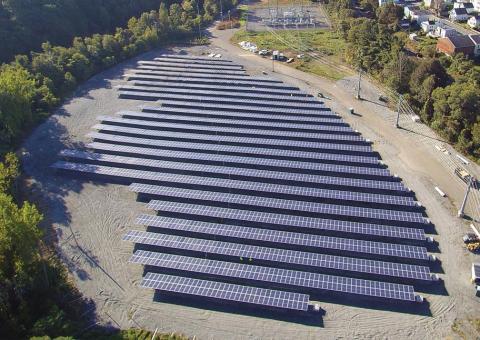Unitil’s “Solarway”—featuring over 3,700 solar panels—has recently surpassed 10.7 million kilowatt-hours of electricity production for its customers, meeting the annual electric needs of more than 185 homes since going live nearly eight years ago.
In 2017, Unitil repurposed land that had once been utilized for a fuel-burning power plant, installing 13 football fields of solar panels on the site of 115 Sawyer Passway, Fitchburg, to create a 1.3-megawatt facility.
“This is a significant milestone, especially as we celebrate the completion of our new 4.9-megawatt solar array in Kingston, New Hampshire,” Unitil External Affairs Director Alec O’Meara said. “In many ways, the success of this project in Fitchburg paved the path for us to pursue similar projects in other areas.”
The 11,232-panel array in Kingston was erected near an existing electrical substation and is expected to generate 9.7 million kilowatt-hours of energy in its first year of service and average 8.6 million kilowatt-hours annually during its lifetime.
The array will generate enough electricity to power over 1,200 homes and is forecasted to save Unitil customers approximately $2 million over its lifetime of operation. It recently earned an Energy Champion Award when it was named NH Energy Week’s “Project of the Year.” Energy Champion Awards are given in recognition of individuals and organizations that champion the state’s energy future.
Both projects contribute to significant reductions in greenhouse gases. “Solarway” alone has cut the need to generate an additional 4.7 metric tons of CO2 that would have come from a traditional power plant over a nearly eight-year period.
“This savings of greenhouse gases is equivalent to taking over 1,000 passenger vehicles off the road for one entire year,” O’Meara said. “This site is a lasting example of Unitil’s sustainability stewardship. We were thrilled to be able to restore the historical use of this land by having it provide renewable energy directly to the community and, in doing so, helping to build a more sustainable energy future for the Commonwealth.”


